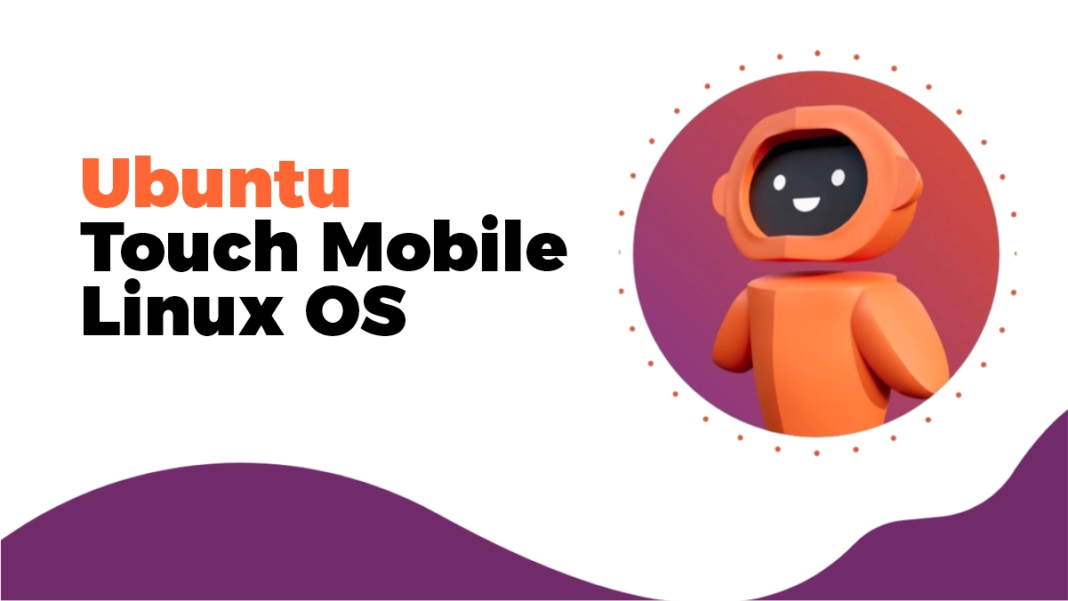What if your smartphone ran full Linux – not Android – and gave you complete control over your device, privacy, and software? Ubuntu Touch Mobile Linux OS promises exactly that: an open-source alternative to the closed ecosystems of Android and iOS. At first glance, it might seem like a niche experiment. But as concerns around data, surveillance, and platform lock-in grow, more tech-savvy users ask: Can Ubuntu Touch compete?
In this article, we explore Ubuntu Touch in depth: how it works, where it succeeds (and fails), whether it’s still alive, and whether open-source smartphones can realistically challenge Android and iOS. If you’re wondering “Is Ubuntu Touch still alive?” or “Can Ubuntu Touch be installed on any phone?”, you’ll find clear answers here. Let’s dive in.
Understanding the Landscape and Challenges
Why a Linux-based mobile OS even matters
Smartphones in 2025 are dominated by Android (~70 %) and iOS (~27 %) (per industry share reports). Alternative platforms are marginal. But many problems linger:
- Lack of user freedom: You can’t see or modify core OS internals on Android/iOS.
- Privacy & data capture: Apps and services increasingly demand intrusive permissions.
- Ecosystem lock-in: Switching platforms means sacrificing your app investments, settings, and data continuity.
A Linux-based mobile OS holds theoretical promise: total transparency, modular software, full access to system internals, and community-driven development.
That said, the challenges are enormous. Mobile hardware is tightly coupled with vendor drivers, SoC firmware, baseband processors, proprietary blobs, and power/performance tradeoffs. To match the polish, stability, and app ecosystem of Android/iOS – that’s a steep hill.
What is Ubuntu Touch? (Is Ubuntu Touch a mobile operating system?)
Yes – Ubuntu Touch is a bona fide mobile operating system built for smartphones and tablets. It is developed and maintained by the UBports community (after Canonical officially dropped Ubuntu for phones in 2017). Wikipedia
Its UI is built on Qt / QML and is optimized for touch-based navigation (edge swipes, scopes, etc.).
Unlike Android, which uses a Java-like middleware layer and a huge app ecosystem, Ubuntu Touch uses containerization (e.g. Libertine, Waydroid) for compatibility with desktop-style or Android apps under well-defined boundaries. Ubports
The OS also aims for convergence – the idea that your phone can adapt to a desktop environment when connected to a larger display. This vision was part of Canonical’s original plan and remains a selling point for enthusiasts. Wikipedia
Is Ubuntu Touch still alive?
Yes – Ubuntu Touch is alive and actively maintained. The UBports community continues to push OTA updates, device support, and base Ubuntu upgrades.
For example, the Ubuntu Touch OTA-24 update was released in 2025, bringing improvements across multiple supported devices. Ubports The community is actively preparing the next major base upgrade (Ubuntu 24.04 / “Noble”), with features like NFC, GPS, telephony improvements under development. UBports Forum In forums, UBports outlines the roadmap deeply and encourages community contributions. UBports Forum
Still, it’s fair to say Ubuntu Touch is not at the same scale as mainstream platforms. It relies heavily on volunteer maintainers, external community porters, and limited resources. But it is not dead.
Can Ubuntu run on a mobile phone? / Is there any Linux OS for mobile?
Yes – Linux can run on mobile phones, but with caveats. Many so-called “Linux phones” use hybrid or compatibility layers to bridge hardware dependencies:
- Ubuntu Touch itself often uses the Halium or Android kernel / drivers (i.e., reusing Android low-level hardware interfaces while replacing the upper stack) to enable compatibility with existing hardware. Wikipedia
- Other mobile Linux OSes (e.g. postmarketOS, PureOS, Phosh-based distributions) use different shells (Phosh, Plasma Mobile) and adopt a more modular stack. Wikipedia
- Some phones (e.g. PinePhone, Librem 5) are sold with Linux-first designs and more open hardware support.
Thus, Linux on mobile is viable – but achieving full hardware compatibility, performance, and app ecosystem parity is the hard part.
What Ubuntu Touch Offers, Its Strengths & Weaknesses, and How It Compares
Strengths: Where Ubuntu Touch shines
- Freedom, Control & Transparency You have root access, full control over the system, and can inspect or alter software as desired. No hidden proprietary middleware.
- Privacy-Focused Architecture Because the OS is open, there’s no hidden telemetry or closed backdoors. Apps run under strict confinement.
- Convergence & Desktop Potential Ubuntu Touch supports running desktop-style apps (via Libertine) and aims to enable your phone to behave like a computer when docked.
- Android-app compatibility (via Waydroid / containerization) Recent versions include or support Waydroid, which can run a full Android environment in a container to host Android apps. This alleviates the “no apps” problem to some degree. Ubports
- Active Updates & Community Support OTA updates continue, and devices such as Fairphone 5 are now among the better-supported devices. devices.ubuntu-touch.io
- Unique Device Support Ubuntu Touch works on devices that were never envisioned by manufacturers to run Linux – e.g. older Pixels, OnePlus devices, etc. UBports Forum
Weaknesses & Real Constraints
- Limited Hardware / Device Support You cannot install Ubuntu Touch on any phone out of the box. Only certain devices are supported – see the official list at devices.ubuntu-touch.io. Ask Ubuntu
If your phone is unsupported, you’d need to port it – a technical and time-consuming effort. This directly answers: “Can Ubuntu Touch be installed on any phone?” – not reliably; only supported devices or those with community ports. - API / Feature Gaps Some features (e.g. MMS, push notifications, camera, sensors) are partially unsupported, buggy, or inconsistent across devices.UBports Forum
Even the “Noble” (24.04-based) builds are still resolving telephony, MMS, and camera issues. UBports Forum - Security & Sandboxing Limitations Compared to hardened systems like GrapheneOS, Ubuntu Touch is often criticized for weaker sandboxing, lesser exploit mitigations, and a reduced security model. GrapheneOS Discussion Forum Some users argue Ubuntu Touch is “years behind” in security. GrapheneOS Discussion Forum
- App Ecosystem & Developer Base The number of native apps is small compared to Android/iOS. While containerized Android apps help, performance and integration can suffer.
- Resource Constraints Running full Linux with containers is heavier on power, memory, and storage. You may see performance or battery compromises compared to highly optimized Android builds.
- Fragmented Port Stability Because each device port is maintained by different volunteers, user experience and quality vary widely. A phone may be stable today but regress tomorrow depending on maintainer availability.
Comparison: Ubuntu Touch vs GrapheneOS and Alternatives
- GrapheneOS is focused purely on security, running on Google Pixel hardware with hardened kernels and advanced sandboxing. It does not support Linux-style convergence or desktop apps.
- Ubuntu Touch’s strength is functionality and control, but GrapheneOS is arguably more mature in security. Discussion Forum
- GrapheneOS also has narrower device support (mostly Pixel) – so the tradeoff is hardware constraint vs broader device potential. Cape
- Other Linux mobile OSes (e.g. postmarketOS, /e/ OS, Sailfish OS) offer alternative philosophies: some lean Android-compatible (de-Googled), some pure Linux-first. Ubuntu Touch occupies a middle point between full Linux ideology and pragmatic compatibility. Intelivita
Can Ubuntu Touch Really Compete? (Actionable Insights & Path Forward)
What an ideal competitor would need to offer
To realistically challenge Android and iOS, Ubuntu Touch (or any Linux mobile OS) would need:
- Broad, stable device support across current-gen phones
- Polished performance and resource efficiency
- Rich app ecosystem or seamless app bridging
- Strong security measures and sandboxing
- User-friendly tooling for installation, updates, backups
- Support from hardware vendors or chip makers
- Dedicated funding, professional engineering resources
Ubuntu Touch has begun to approach some of these – but is not there yet.
Realistic use cases / niches where Ubuntu Touch is viable
- Tech enthusiasts, developers, and privacy-conscious users who accept compromises for openness
- Legacy phones where Ubuntu Touch can revitalize aging hardware
- Convergence / mobile desktop use for Linux users who want one device for everything
- Educational or research contexts exploring open-source mobile systems
It’s less likely to appeal to mainstream consumers who demand full app ecosystems, zero bugs, and guaranteed stability.
Actionable advice for users or developers
- Check device compatibility first using the canonical device list (devices.ubuntu-touch.io).
- Prefer devices with active maintainers – e.g. Fairphone 5 or other well-supported ports. devices.ubuntu-touch.io
- Experiment with Ubuntu Touch in parallel to Android – dual-boot or via spare devices.
- Contribute to the ecosystem: test, report bugs, help porting.
- Follow the community’s OTA updates and roadmap to watch how features (e.g. camera, telephony) evolve.
- For better app availability, monitor and use Waydroid integration carefully.
- Stay realistic: assess whether your daily apps and workflows function acceptably before switching.
People Also Asked (FAQs)
Can Ubuntu Touch be installed on any phone?
No. Ubuntu Touch can only be installed on devices that are officially supported or have community ports, as listed on the UBports device page. Porting to arbitrary phones is technically possible but often complex and requires significant development work. Ask Ubuntu
Is Ubuntu Touch still alive?
Yes. The UBports community continues active development, regularly releasing OTA updates (e.g., OTA-24 in 2025) and preparing for base upgrades (Ubuntu 24.04). Ubports
Can Ubuntu run on a mobile phone?
Yes, Ubuntu (via Ubuntu Touch or derivatives) can run on phones by leveraging Android kernel and driver compatibility layers (Halium) or via native Linux distributions on supported hardware. Wikipedia
Is there any Linux OS for mobile?
Yes. Besides Ubuntu Touch, options include postmarketOS, PureOS, Mobian, and other Linux-based mobile projects using graphical shells like Phosh. Wikipedia
Can GrapheneOS be installed on any phone?
No. GrapheneOS is primarily supported on select Google Pixel models, where hardware hardening and validated drivers exist. Arbitrary phones are not supported. Cape
Is Ubuntu Touch a mobile operating system?
Yes – Ubuntu Touch is a fully-fledged mobile operating system optimized for touchscreen devices, maintained by the UBports community. Wikipedia
Ubuntu Touch Mobile Linux OS represents one of the most ambitious efforts to break the duopoly of Android and iOS. It offers transparency, control, and a path towards true open-source smartphone experiences. It is alive, evolving, and backed by a passionate community.
However, it is not a turnkey competitor just yet. Gaps remain in device support, app ecosystem, hardware compatibility, and security hardening. For now, Ubuntu Touch appeals most to enthusiasts, developers, and those who are willing to face occasional rough edges for the sake of digital sovereignty.


